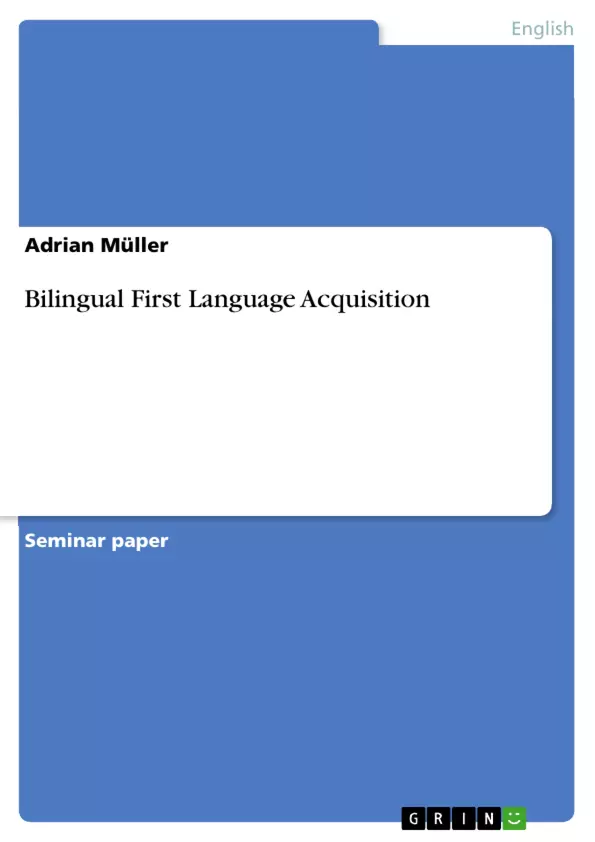This research paper focuses how children acquire two or more languages simultaneously from birth on, how their achievements can be measured and if their development proceeds similar to monolingual children. To a certain extend the argument includes theories of Applied Linguistics and Cognitive Linguistics . Therefore, this analysis can be used as overview or short introduction about the current research on bilingual first language acquisition and may encourage the reader, which might be also a teacher who is likely to face a multilingual environment in his classrooms, to enhance his knowledge in this specific area.
Inhaltsverzeichnis (Table of Contents)
- Introduction
- Theoretical Principles
- Bilingual First Language Acquisition
- Research Issues
- Categories of Early Childhood Bilingualism
- Linguistic Analysis
- Morphosyntax
- Lexicon
- Phonology
- Code-Switching in Early Bilinguals?
- Conclusion
Zielsetzung und Themenschwerpunkte (Objectives and Key Themes)
This research paper examines bilingual first language acquisition, focusing on how children acquire two or more languages simultaneously from birth. It explores methods for measuring the achievements of bilingual children and investigates whether their development proceeds similarly to monolingual children. The paper incorporates theories from Applied Linguistics and Cognitive Linguistics, offering an overview and introduction to the current research on bilingual first language acquisition. It aims to encourage readers, particularly teachers who may encounter multilingual environments in their classrooms, to deepen their knowledge in this specific area.
- Simultaneous vs. sequential language acquisition
- Linguistic development of bilingual children
- Comparing the performance of bilingual and monolingual children
- The role of Applied Linguistics and Cognitive Linguistics in understanding bilingualism
- The practical relevance of bilingual first language acquisition research for educators
Zusammenfassung der Kapitel (Chapter Summaries)
- Introduction: This chapter introduces the concept of bilingualism and its significance for individual and societal development. It addresses the common misconception that early bilingualism hinders children's cognitive and linguistic development. The chapter emphasizes the importance of studying bilingual first language acquisition to understand the impact of multilingual upbringing on children's school achievement, cognitive development, and linguistic abilities.
- Theoretical Principles: This chapter defines bilingualism and explores different perspectives on its acquisition. It explains the distinction between sequential and simultaneous childhood bilingualism, highlighting the age of acquisition as a significant marker. The chapter also discusses the influence of direct instruction on language acquisition, providing a comprehensive understanding of the theoretical framework within which bilingual first language acquisition is studied.
Schlüsselwörter (Keywords)
This research paper focuses on bilingual first language acquisition, exploring key concepts like simultaneous and sequential language acquisition, linguistic development, cognitive abilities, and the application of theories from Applied Linguistics and Cognitive Linguistics. It aims to contribute to a deeper understanding of the complexities of multilingualism and its implications for education.
- Quote paper
- Adrian Müller (Author), 2014, Bilingual First Language Acquisition, Munich, GRIN Verlag, https://www.grin.com/document/283884



